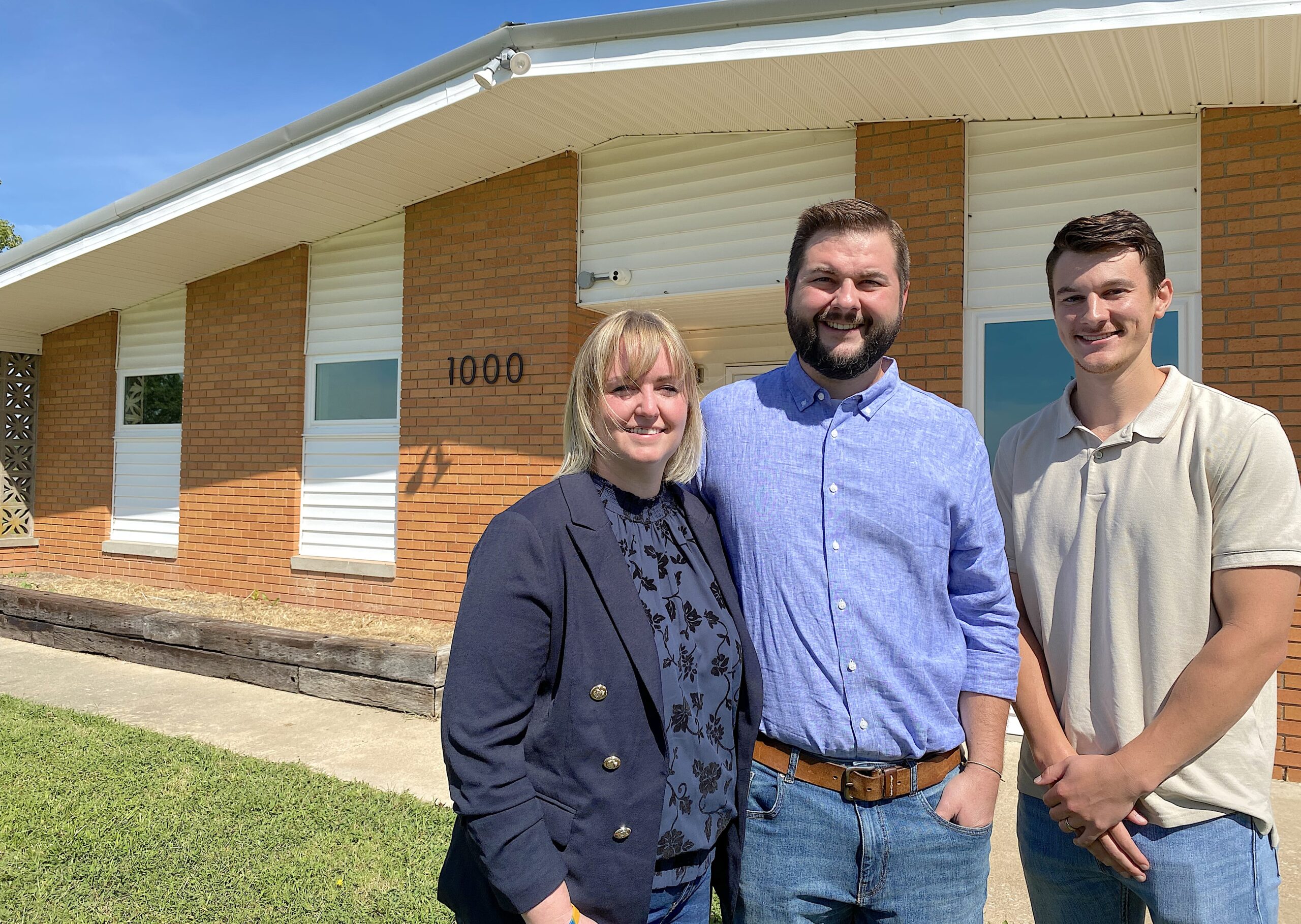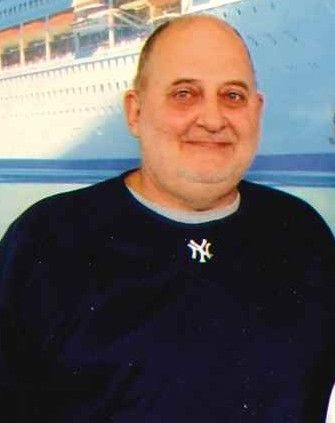‘This is what primary care is going to be’: Lewis County natives offering alternative to pay for, access healthcare

La BELLE, Mo. — Dr. Aaron Neisen, his wife Stephanie and Matthew Scoggin hope to change how people think about — and pay for — health care.
The three Lewis County natives — Stephanie grew up in La Grange, Aaron grew up south of Lewistown and Matt grew up south of La Belle — recently announced plans to open Healthspan in La Belle. The clinic opens on Sept. 3, and an open house is set for 4-7 p.m. on Sept. 8.
Healthspan is not affiliated with Quincy Medical Group or Blessing Health, both of which have several clinics within a 60-mile radius of Quincy, Ill. Instead, it is a direct primary care (DPC) provider where physicians provide primary care services under a flat, periodic membership fee — like a membership at the local gym.
Healthspan’s pricing model is simple: $80 per month per person, $150 per month for a couple and $200 for a family.
“This is what everybody’s going to be doing in 30 or 40 years. This is what primary care is going to be,” Aaron said. “It makes too much sense. A person has unlimited access to their doctor. It’s at-cost labs. It’s at-cost imaging. It’s at-cost meds.”
Aaron, 37, now a family practice doctor at Scotland County Hospital in Memphis, Mo., will become the only full-time doctor in Lewis County.
“I kind of call (Lewis County) a healthcare flyover state,” Aaron said. “It’s Hannibal, it’s Quincy, it’s Kirksville, it’s Iowa City. It’s 45 minutes to an hour (to find healthcare).”
Scoggin, 26, will be the nurse practitioner at Healthspan. Stephanie, 35, will be the office manager, handling the business affairs and coordinating community outreach efforts.
Aaron learned about the direct primary care model at a hospital in Wichita, Kan., while he and Stephanie lived in Kansas City for 12 years. The Neisens, now with three young boys, returned to Lewis County two years ago and bought (and since renovated) a building off Missouri Route 6 in La Belle that once was used by Dr. Gene Childress, who served the county as a primary care doctor from 1984 until 2021.
However, they didn’t decide to start the direct primary care model until Scoggin finished his education to become a nurse practitioner this summer.
“The original plan was for me to work at Scotland County with (Aaron), but then we had some dinners together, and that kind of fell under the rug and this kind of got going,” Scoggin said.
“Before Matthew approached us, we had no plans of what we were going to do with this clinic,” Aaron said. “It’s like all the pieces had to fall together for this to work.”
The name of the business, Aaron said, is named after the period in your life when you’re in good health or feel healthy — as opposed to one’s lifespan.
“Not nearly enough emphasis is placed on one’s healthspan, and way too much emphasis is on lifespan,” Aaron said. “I can get someone six months or a year on the back end of their life, but at what cost? Is it worth living that kind of life? Eighty percent of all healthcare expenses a person will incur in their entire life occur in the last six months of life. That means we’re throwing most of our healthcare resources at folks who are in a very bad way.
“If I can prevent folks from having cancer, dementia, metabolic disease and heart disease, it’s very difficult for a person not to live to be 80 to 85 years old.”
Aaron says Healthspan can keep its prices low because direct primary care doctors see fewer patients. He says the average family medicine doctor sees between 2,500 and 3,500 patients annually, but the average DPC doctor typically sees a little more than 600.
“We’re finding out that taking better care of fewer patients saves something like 80 to 90 percent of healthcare costs,” he said. “Opposed to diagnosing the problem and treating the problem, our goal is by giving (patients) basically unfettered access to (a DPC doctor), we can get out ahead of the problem, as opposed to, ‘Well, now I have diabetes. Help me fix it.’
“I’d like to see you before a problem occurs because you’re not worried about coming in and spending money to see the doctor. People often wait multiple weeks when they’re feeling ill before they go see the doctor. With this (model), if you don’t feel too good, you can see me the same day or the next day. Call me, text me. Got a rash on your arm? Take a picture of it. Send it to me. It’s the access you don’t get anywhere else.”
Seeing fewer patients allows for more time spent with patients. Stephanie said the average patient encounter at most hospital settings is seven minutes. Most patient meetings at Healthspan will be between 30 and 60 minutes, allowing for a physician to delve more deeply into a patient’s questions and concerns.
Members will have access to Healthspan’s pharmacy and non-stop access to the Neisens and Scoggin through cellphones, texts, Facetime and other social media methods.
“We’re not going to call them at 1 a.m. with lab results, but I don’t want them to call me at 1 a.m. for a sore throat,” Aaron said. “It’s a situation of mutual respect.”
Stephanie said the membership plans make DPC clinics affordable.
“It’s almost like a different kind of insurance,” she said. “You are paying for access to a provider. You may use it 10 times in one month, you may use it zero times in three months, but you still have to keep paying your membership.”
Healthspan recommends patients have a high-deductible insurance plan. Aaron said most people don’t have that much out-of-pocket medical care outside of what the DPC requires.
“I’m able to cover 90 percent of folks’ needs,” Aaron said. “I can cover acute stuff. I can cover chronic stuff. I can cover the long-term stuff. If you break your arm, as long as it’s not an open fracture and it’s not terribly displaced, I can manage that fracture. Primary care used to do a lot of stuff, but now primary care has been overrun, and so now it’s, ‘I’m going to have the specialist take care of that.’ Family medicine should be taking care of a lot of that stuff.
“If you’re having chest pain, don’t call me. Call 911. If you get in a car wreck, don’t call me. Call 911.”
Not serving as a satellite clinic for a larger hospital, Aaron says, means Healthspan will deal less with insurance companies. Healthspan also can recommend patients for specialist networks at larger hospitals.
“If you work for anyone else, you have to satisfy (the insurance companies), check the boxes for them,” he said. “With this, we can provide the care we to provide, the care we’re trained to do and spend more time with our patients and not be checking those boxes. We are licensed practitioners, and we don’t need to be affiliated with a group.”
The closest DPC clinics are in Macon, Mexico and Columbia in Missouri, and in the Springfield area in Illinois. DPCfrontier.com says 2,380 direct primary care facilities are in 48 states.
The American Academy of Family Physicians recently said, “DPC benefits patients by providing substantial savings and a greater degree of access to, and time with, physicians. DPC allows family physicians to care for the whole person while reducing the overhead and negative incentives associated with fee-for-service third-party-payer billing.”
Aaron says most healthcare now is population-based, with guidelines for cholesterol, blood pressure and cancer applying to most people. He said direct primary care facilities are transitioning to individualized care.
“For example, that’s like saying here are the guidelines for your cholesterol,” he said. “What we did was run a cholesterol panel that breaks down every single component of your cholesterol panel, and you have a high heritable cholesterol, meaning statins aren’t going to lower that number. If I want to do something that’s going to prevent you from having a heart attack, I can’t just give you a statin and move on with my day. I have to look deeper. I have to find a different medicine. I have to individualize that to each patient.”
PUBLISHER’S NOTE: An earlier version had an incorrect name for The Neisens. We apologize and regret the error. JRG.
Miss Clipping Out Stories to Save for Later?
Click the Purchase Story button below to order a print of this story. We will print it for you on matte photo paper to keep forever.

